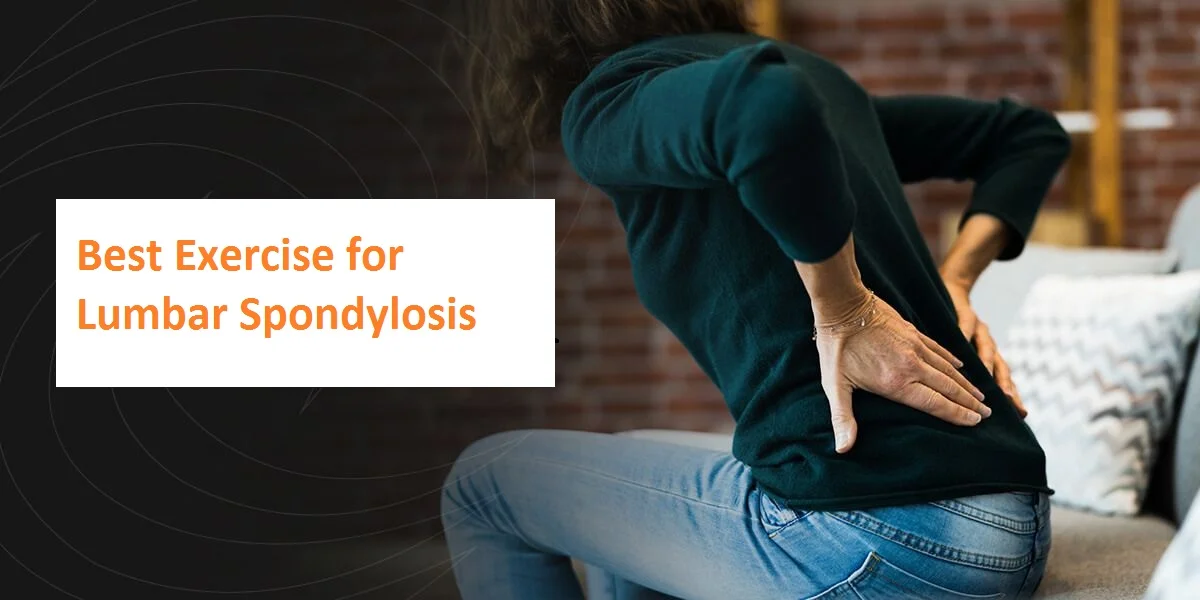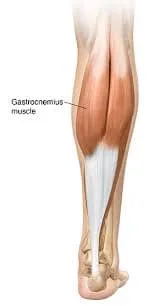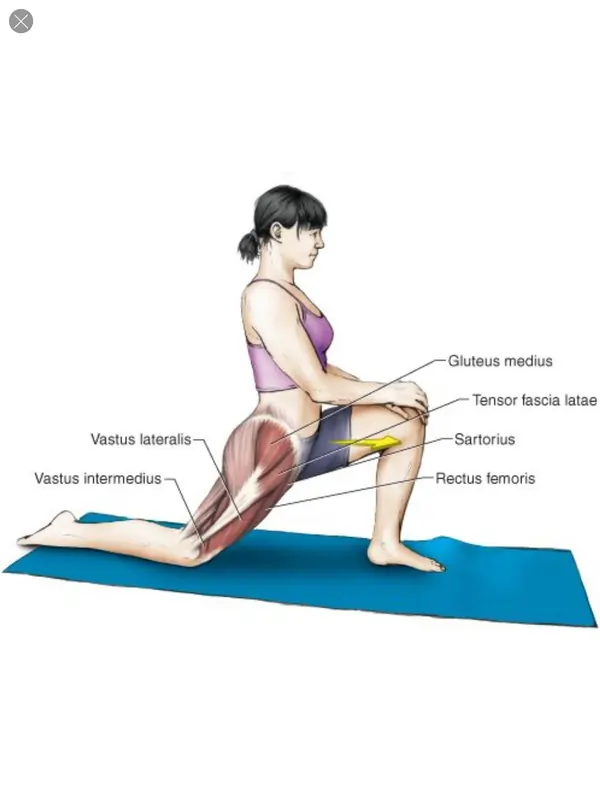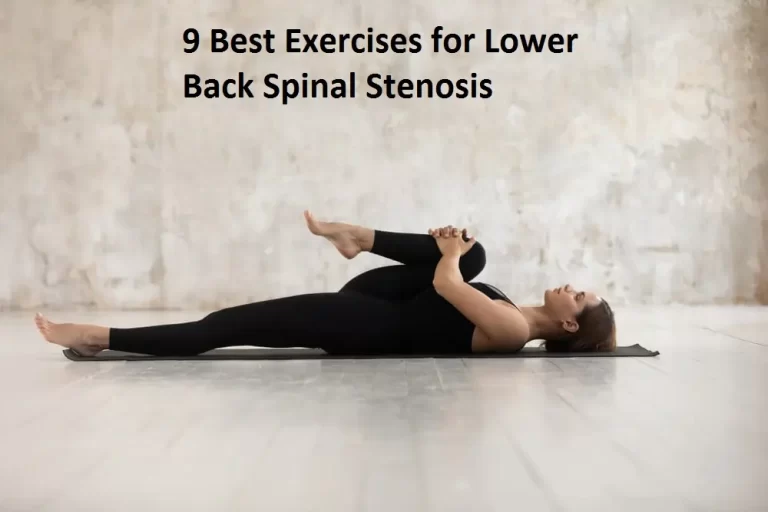The 7 Best Exercise for Lumbar Spondylosis
Exercise for Lumbar Spondylosis is an excellent option to recover from Lumbar Spondylosis naturally, Exercise helps to strengthen your lower back muscles and also improves flexibility. In this article, we discuss what is Lumbar Spondylosis and the exercises that really help to improve the function of the Back you can do at Home.
Table of Contents
What is a Lumbar Spondylosis?
Lumbar Spondylosis is an age-related degenerative change of the vertebrae and disks of the lower back. These changes are called degenerative disk disease and osteoarthritis.
Lumber spondylosis mostly occurs by wear and tear on the components of the spine. The common risk factor for developing lumber spondylosis is age. In fact, by age 60 most people will show symptoms of spondylosis on investigations like X-ray or MRI.
According to the United States, more than 80% of individuals older than 40 years have lumbar spondylosis, increasing from 3% of individuals aged 20-29 years. Lumbar osteophytes have been found to be present in about 20% of males and 22% of females aged 45-64 years and in 30% of males and 28% of females aged 55-64 years.
Lumber spondylosis is common, but it is usually not serious. Lumbar spondylosis often can be treated without surgery. Medical treatment options include pain relief medicine, muscle relaxants, anti-inflammatory medications, and steroid injections. Physical therapy is also effective which include many exercise and hot- and cold therapy are also helpful in alleviating pain.
Causes for Lumbar spondylosis
- Old-Age
- Heredity
- Back Trauma
- Repetitive spine loading
- Repetitive bending, lifting, twisting
- Sustained postures.
How can I reduce Lumbar spondylosis?
Treatment options are:
- Physiotherapy treatment such as Exercise therapy.
- Transcutaneous electrical nerve stimulation (TENS)
- Lumbar supports.
- Traction.
- Spine manipulation.
- Massage therapy.
Exercises for Lumbar spondylosis Video
Exercises for Lumbar Spondylosis with Pictures
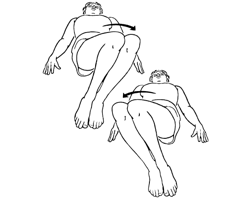
Lumbar Pelvic Rotations
Start with lying on your back with both knees bent and your feet flat on the plinth and then Keeping your knees together roll them to the left as far as is comfortable and then back as far as you can to the right after that Return to the start position in one smooth movement.
Target Repetitions = 10
Single knee to chest
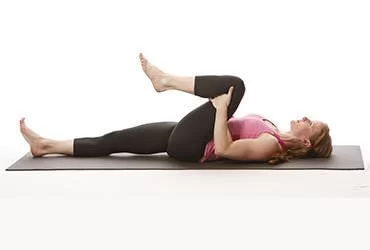
Start with Lying on your back and slowly bring your knee up to your chest and then Place both hands on the knee and gently pull your knee closer to your chest until you feel a tightness. Hold this position for 10 or 30 seconds then slowly return to the start position you should Repeat the exercise with your opposite knee.
Target Repetitions = 10
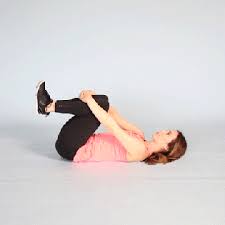
Lumbar Spine flexion or double knee to chest
Start with lying on your back and slowly bring both your knees up to your chest Hold your knees and gently pull them closer to your chest until you feel tightness after that Hold this position for 10 or 30 seconds then slowly return to the start position.
Target Repetitions = 10
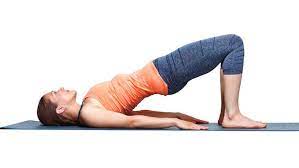
Bridging
Start with lying on your back with your knees bent and feet flat on the bed and then Slowly lift your hips off the bed as high as you can comfortably manage to hold this position for 5 or 10 seconds and gently return lower back to the start position Make sure the head and neck are kept straight to avoid strain on the neck joints.
Target Repetitions = 10
Lumbar Spine Extension

Start with lying on your stomach with your hand’s palm down next to your shoulders and then Keeping your hips on the floor straighten your arms so your back is arched after that Push back as far as you comfortably can and Hold for 5 or 10 seconds and gently lower back to the start position.
If you cannot lie on your stomach you should stand with your hands on the small of your back and arch backward as far as you comfortably can Hold for 5 to 10 seconds and gently return to the start position.
Target Repetitions = 10
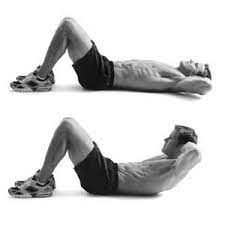
Curl-up (Crunch)
Start with lying on your back in the hook-lying position (knees bent and feet on the floor).
Cross your both hand and arms across your chest.
and then slowly raise your head, neck, upper back, and shoulders off the floor.
As you raise up, exhale. As you lower down, inhale.
Target repetitions =1
Hamstring stretch
Hamstring stretch is a type of stretching exercise that focuses on stretching the muscles located in the back of your thigh, known as the hamstrings. Here’s how to do a basic hamstring stretch:
How to do?
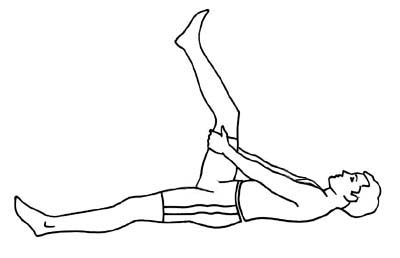
- To do Hamstring Stretch start with Lie on your back with your legs straight out in front of you.
- Slowly lift one leg off the ground, keeping it straight.
- Keep your hands behind your thigh or calf and gradually pull the leg towards you until you feel a stretch in the back of your thigh.
- Hold the stretch for 15-30 seconds.
- Release and repeat on the other leg.
- You can also do this stretch with a towel or resistance band looped around your foot to help deepen the stretch. Be sure to breathe deeply throughout the stretch and avoid jerking or bouncing movements.
- if you feel any pain or discomfort please avoid this exercise.
Important Points for When Doing Exercises for Lumbar spondylosis
- All exercises should be within the pain-free range or avoid pain-full movement while exercising.
- Repeat the exercise 2 to 3 times a day.
- If you feel the exercises are hard to do or can only move a little then gradually build up to the total number of repetitions over a few days or even a couple of weeks.
How Can These Exercises Reduce the Lumbar Spondylosis Pain
All these exercises focus on strengthening your spinal support system—your back and core (abdominal) muscles. If the muscles around your spine support and stabilize your back, you may have less pain—and make a healthier spine for your body.
A strong core is a key to back health and also Your core muscles work like your spine’s “front anchor.” When the spine’s supporting muscles are strong, you’ll likely experience reduced spinal osteoarthritis symptoms like joint pain and stiffness.
Can Exercise with Lumbar Spondylosis Hurt Me?
Your spine specialist should give you permission before you start any new stretching or exercise program and if any activity seems harmless, it can cause further injury if done without any guidance from your doctor.
Your doctor knows your specific medical history or condition so he or she may refer you to a physical therapist (PT) or another trainer to show you how to perform all exercises and stretches that take your specific lumbar spondylosis diagnosis into account.
Lastly, do not push yourself too far during exercising. Lumbar spondylosis is painful enough—listen to your body, and tell your spine specialist if you experience any kind of pain or any other symptoms like tingling or numbness during physical activity.
Patient Education
The patient is educated about the condition and lumbar anatomy, correct posture, and ergonomics, and given appropriate back exercises. The patient is advised to avoid activities that aggravate the lumber spondylosis.
FAQ
There are many exercises that prevent or cure spondylosis like pelvic tilt, knee lifts, curl-ups, and knee-to-chest.
There are many activities that should be avoided while lumbar spondylosis such as heavy lifting, excessive bending, twisting, or stooping, and avoidance of any work or recreational activities that cause stress to the lumbar spine.
Lumber spondylosis is caused by wear and tear on the components of the spine and the major risk factor for developing spondylosis is age. In fact, by age 60 most people will show signs of spondylosis on X-ray or MRI.
When you’re living with spondylolisthesis, it’s important to maintain a good posture while sitting.
Sit with a neutral spine. Don’t slouch.
Keep your lower back supported by using a pillow while sitting.
Sit with your feet flat and supported on the ground rather than sitting cross-legged.
Castor oil is great during lumber spondylosis for relieving sore muscles and promoting adequate fluid circulation in the body. A tablespoon of castor oil before bedtime will help in the removal of toxins and relaxation of muscles you can Do this once or twice a week. Castor oil is also a natural remedy for rheumatoid arthritis and lumber spondylosis.

